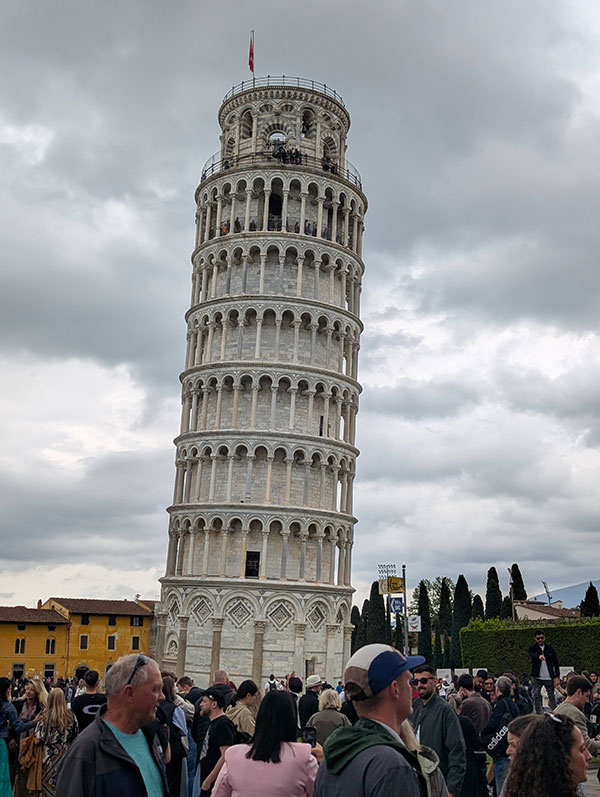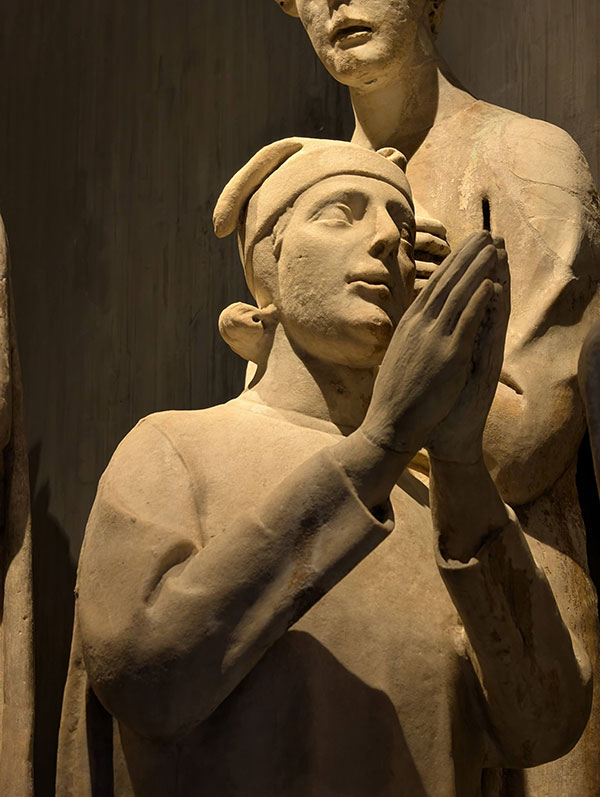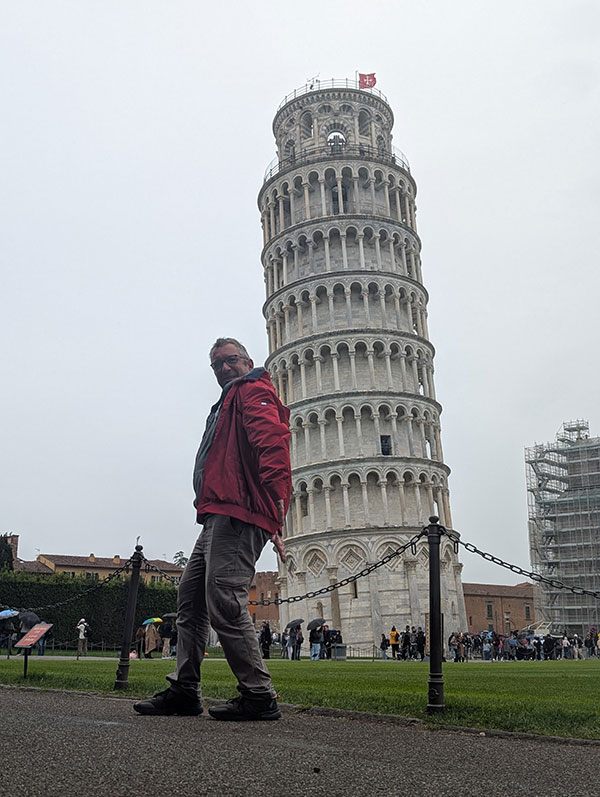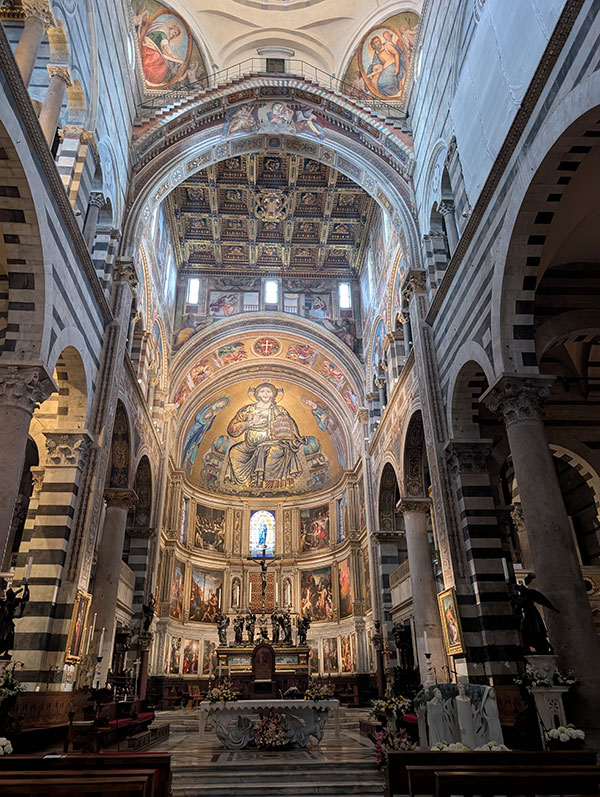
Our goal is to contrast the Medici-era power and complexity of Florence with the distinct flavour of Pisa, capturing the full historical and visual spectrum of the Tuscan region.
Pisa offers a crucial visual counterpoint to Florence, representing a different kind of regional power. While Florence flourished under Renaissance humanism and banking, Pisa was defined by its naval supremacy as one of the four great Maritime Republics, with its wealth forged through Mediterranean trade.
This historical difference is imprinted on the city’s architecture:
| Location Characteristic | Pisa’s Visual Identity | Florentine Counterpoint |
| Architectural Style | Pisan Romanesque—Gleaming white marble, layered colonnades, and a focus on grand, freestanding civic monuments (Piazza dei Miracoli). | Florentine Renaissance—Ochre and stone façades, rationalist design, and tightly integrated urban blocks (Palazzo Vecchio, Pitti Palace). |
| Urban Mood | Wide, open ceremonial spaces (Piazza dei Miracoli) that feel exposed and monumental, contrasting with secluded, porticoed medieval streets. | Dense, tightly controlled palazzi and narrow alleyways that convey intense wealth and hidden political intrigue. |
| Waterfront | The Lungarni—Palaces along the Arno that reflect a merchant-aristocracy with strong ties to the sea. | The Arno River in Florence, historically focused on connecting to the Tuscan hinterland and industrial power. |
Pisa provides essential visual variety for any project set in Tuscany. It allows us to transition from the sophisticated, high-drama aesthetic of a Renaissance centre to a setting that evokes ancient seafaring power and intellectual rigour (as seen in the Scuola Normale Superiore).
Our scouting here is focused on ensuring your project can utilise this unique transition, offering a more complete and visually dynamic narrative of central Italy.



